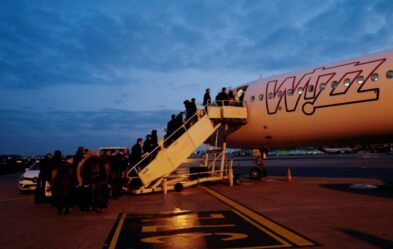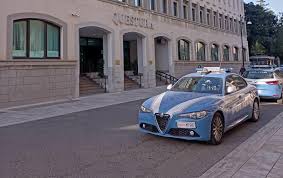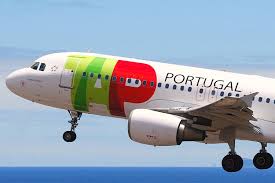Italy: Budget airlines scoop up routes as Alitalia relaunch stalls

FILE PHOTO: A Wizz Air Airbus 321-231 aircraft, registration number HA-LXT is pictured at the Chopin International Airport in Warsaw, Poland April 11, 2019. Picture taken on April 11, 2019. REUTERS/Kacper Pempel/File Photo
Milan: As the launch of a successor to Alitalia drags on, budget carriers Ryanair and Wizz are bulking up on Italy’s domestic routes, grabbing market share from the new carrier before it even takes flight.
Italia Trasporto Aereo (ITA) is the name of the new state-owned airline independent of bankrupt Alitalia which Rome plans to start, but talks with the European Commission have pushed that back to August at the earliest.
Ryanair, Europe’s largest budget airline, is expanding to more than 100 domestic routes this summer from 60 before the pandemic.
It could move ahead of Alitalia on its home turf in the second quarter, according to consulting firm AlixPartners.
AlixPartners expects Ryanair’s slice of domestic seats offered to rise to 35% from 32% before the pandemic while Alitalia shrinks to 32% from 41% in the quarter to June 30.
Budget players including easyJet could account for up to 67% of domestic flight capacity in the second quarter, AlixPartners said.
That’s up from 54% before the pandemic, already well above the European average of around 40%.
“We are now moving to the next level” in Italy, by building outbound bases and moving into the “very significant” domestic market, Wizz Air CEO Jozsef Varadi said.
“This is the right time to show up, when the industry is going through some difficulties.”
Wizz is set to grow from zero to 10% of the domestic market this summer, AlixPartners said.
“Since they have no competitors, the low-cost airlines do what they want,” said Franco Gattinoni, chairman of major Italian travel firm Gattinoni.
“We have left everything in the hands of people who only think about earning and not the well-being of the sector.”
Like many in the market, Gattinoni is concerned budget carriers that quickly add capacity when airport fees are low may disappear just as fast when better opportunities appear elsewhere, a tactic he describes as “hit and run”.
In recent months Ryanair and Wizz have commandeered temporary slots at Milan city airport Linate while clinching cut-price deals with secondary airports.
Both have also stepped up their presence at Alitalia’s hub at Rome-Fiumicino with Ryanair doubling the number of planes it has based there this summer to six.
Crucially, such carriers do not facilitate direct connections with long-haul flights, undermining the prospect of the hub-and-spoke model used by large European rivals such Air France and Lufthansa.
Ryanair, which for years has been the largest airline flying from Italy to EU countries, says its low fares and direct flights from secondary airports have become an engine of the Italian economy – and that state-run airlines and travel agents have no role in short-haul travel.
“Ryanair is an integral part of Italian life. It has flights that Alitalia never had,” said Eddie Wilson, chief executive of Ryanair DAC, the largest airline in Ryanair Group, which says it has 630 routes this summer to and from Italian airports.
Wilson said the Italian capacity ramp-up was motivated by a post-pandemic surge in domestic travel, but he concedes Ryanair is keen to win converts to low cost just as it did when full-service carriers retrenched in the wake of the 2008 crisis.
“Flying domestic brings a future customer who can be retained,” said Michele Mauri, AlixPartners Italy managing director. “Low-cost carriers are generally very good in managing customer data and in communicating directly with clients.”
The low-cost expansion in Italy mirrors moves across Europe, where full-service airlines are more exposed to long-haul and business travel, sectors expected to be slower to recover.
COVID-19 “could be a turning point for the three European low-cost carriers,” said James Halstead, managing partner at Aviation Strategy.
ITA CEO Fabio Lazzerini in April conceded that Alitalia’s lack of market presence had left room for an “aggressive campaign by competitors”.
He said ITA would clinch a commercial partnership with a full-service airline to counter the expansion of budget rivals.
That hints at a strategy of indirect competition with the likes of Ryanair and Wizz, allowing it to focus on niches that it can dominate.
“Losing market share is not necessarily a bad thing. Small is probably beautiful here,” said Davy Stockbrokers analyst Stephen Furlong who believes ITA will need to focus on high-margin trunk routes to key global cities, direct long-haul flights to secondary destinations and a few key domestic routes.
That will make ITA – and Italian aviation – a “different beast” to traditional legacy carriers with massive hubs. “In the end it has to be a slimmed down operation,” Furlong said.





